While Reims and Épernay are the first cities that come to mind when discussing the Champagne region, the department of Aube holds its own, notably thanks to its historic city: Troyes, and its vineyards located in ‘La Côte des Bar’.
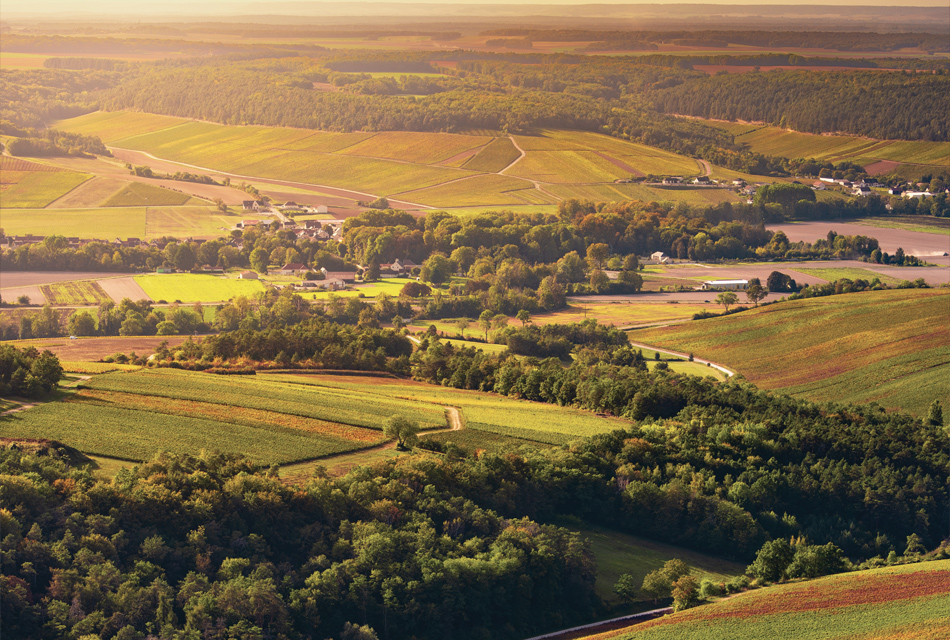
From the Troyes cathedral to rural churches, the Aube department boasts a collection of stained glass windows from the 12th century to the present day, unique in Europe and spread across 350 buildings. This includes 9,000 square meters of stained glass predating the French Revolution and 2,048 protected bays as historical monuments, collectively known as “La route du vitrail ”.
To better understand this ancient art, a visit to the Cité du vitrail, established for a year in the East wing of the former Hôtel Dieu in the city, is a must. In this space covering a total of 3,000 square meters, including nearly 1,000 square meters of permanent and temporary exhibitions, visitors immerse themselves in original works through an immersive and educational approach to the art of stained glass, with a significant focus on the Aubois glass heritage. Here, technical, historical, and iconographic aspects are addressed in a warm scenography. Not to be missed within the City are the 18th-century apothecary with its collection of medicinal boxes and faience, and the restored chapel (19th century) with its monumental stained glass windows. In 2024, this chapel will host an exhibition in partnership with the Notre-Dame Cathedral in Paris.
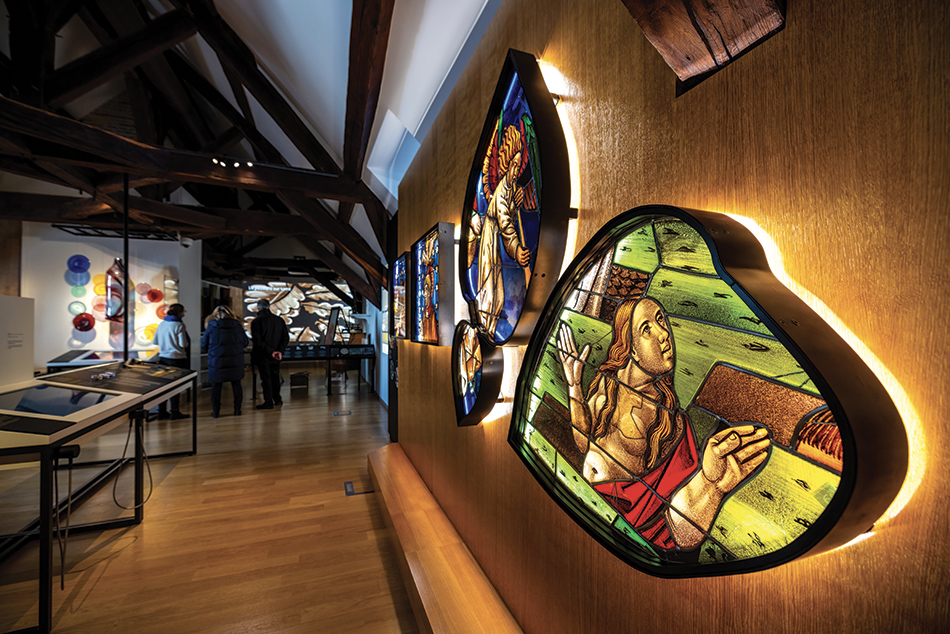
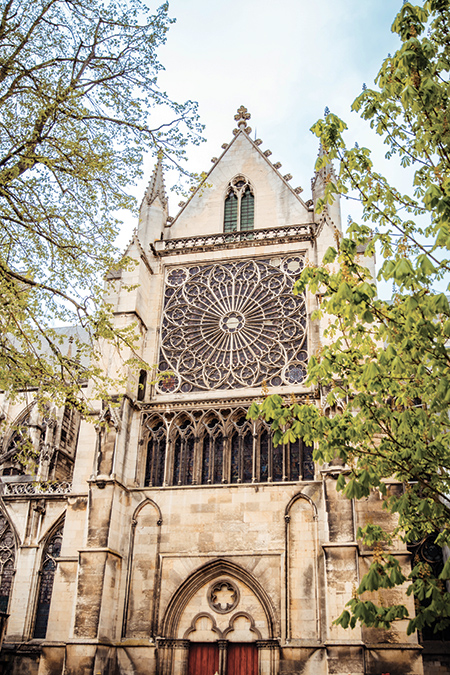
After this exploration, head to the city center where you can observe in situ the Church of La Madeleine (12th century), one of Troyes' oldest, renowned for its carved stone rood screen, a true chiseled lace, and the Saint-Pierre Saint-Paul Cathedral (13th-17th centuries), representative of the Gothic style, measuring 114 meters long, 50 meters wide, and 28.5 meters high. In this edifice, housing the Shrine of Saint Bernard de Clairvaux, 1,500 square meters of period stained glass unfold before our dazzled eyes. To grasp the soul of the city, also make a stop at the Halles Market, where Troyes producers will introduce you to the finest regional offerings.
Since 1911, Aube winemakers have faced the threat of expulsion from the Champagne appellation. A revolt ensued, allowing the winemakers of the Côte des Bar, after years of struggle, to obtain the appellation in 1927. Today, Aube is the second-largest producer of Champagne after Marne. Its 7,132 hectares of vineyards, mainly composed of Chardonnay, Pinot Noir, Pinot Meunier, Arbane, Petit Meslier, Pinot Blanc, Pinot Gris, and Voltis, represent 22% of the appellation. In 2023, the appellation celebrated the 70th anniversary of the Route du Champagne, a 220 km marked tourist circuit on the hilly Côte des Bar, featuring around thirty villages that have shaped Aube's heritage, the land of Pinot Noir (96% of plantations). By the way, make a note in your calendar for the 'Route du Champagne en fête' event on July 20 and 21.
While wines from the Côte des Bar are increasingly sought after, as evidenced by the interest of sommeliers in tastings organized by SommelierS International, those from the Montgueux terroir are still relatively unknown. Located about ten kilometers from Troyes, perched on a hill at 268 meters, its 215 hectares of vineyards, mainly planted with Chardonnay, are nicknamed ‘the Montrachet of Champagne’. In Montgueux, the subsoils consist of 90 million-year-old chalk and flint. This soil imparts a special character to Chardonnay, with a briny and saline quality. Nowadays, 430,000 bottles are produced annually by 19 Champagne brands. One such example is Champagne Hélène Beaugrand, a 3-hectare vineyard since 2018, 95% Chardonnay, followed by Pinot Noir and Pinot Meunier. Facing south, mostly grass-covered, and certified High Environmental Value (HVE), Hélène creates her wines instinctively (0-3 grams maximum), with manual harvesting, based on the taste of the grapes. This strong-willed woman, also part of 'Les Fa'Bulleuses' (a collective of Champagne's women winemakers), introduces us to her wines that, like her, make no compromises. The Grand Carré Blanc de Blancs Brut Nature, fresh and crisp; Grand Carré Blanc de Blancs Extra Brut, beautifully fruity; Derrière la Cabane Blanc de Blancs, a gastronomic Champagne dosed at 3 grams; Particules Élémentaires, dosed at 3 grams, 50% Chardonnay, 50% Pinot Noir; or the Rosé Henriette, 100% Pinot Meunier, perfect with fatty foods, Iberian ham. These wines have a unique and surprising personality.
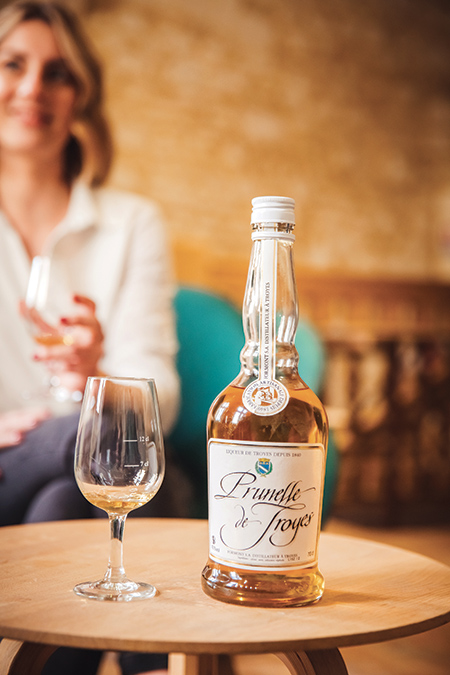
While the Côte des Bar is renowned for its Champagnes, it's worth noting that here, all tastes are allowed. We discover this during our visit to the Cellier Saint-Pierre in Troyes, a 16th-century house once connected to the Saint-Pierre Cathedral by a tunnel. On-site, we explore the last distillery of Prunelle de Troyes, formerly known as Prunelle de Champagne until 1995. Since its creation in 1840, Prunelle de Troyes has been crafted artisanally, following the same recipe, in vintage stills. This liqueur even won the gold medal at the 1900 Paris Universal Exposition. The production process is simple: sloe pits, purchased from jam makers, are crushed and macerated in alcohol. The obtained alcohol is then combined with sugar syrup and other natural ingredients that give it complexity and a unique taste. Double distillation is performed in a copper still, preserving the best of the sloe while eliminating impurities. 100 grams of pits are needed to create one bottle! With its notes of almond, Corinth grape, a hint of sweet spices on the nose, and a taste of bitter and sweet almonds, this 40-degree alcohol pairs perfectly with a coffee eclair. However, this nectar remains confidential, with only 15,000 bottles produced annually, exclusively for the city of Troyes and a few cellars in the department. In addition to the cellar and distillery, the Cellier Saint-Pierre offers oenology courses and tastings of Aube nectars. We experience the work on Pinot Noir through three distinct cuvées.
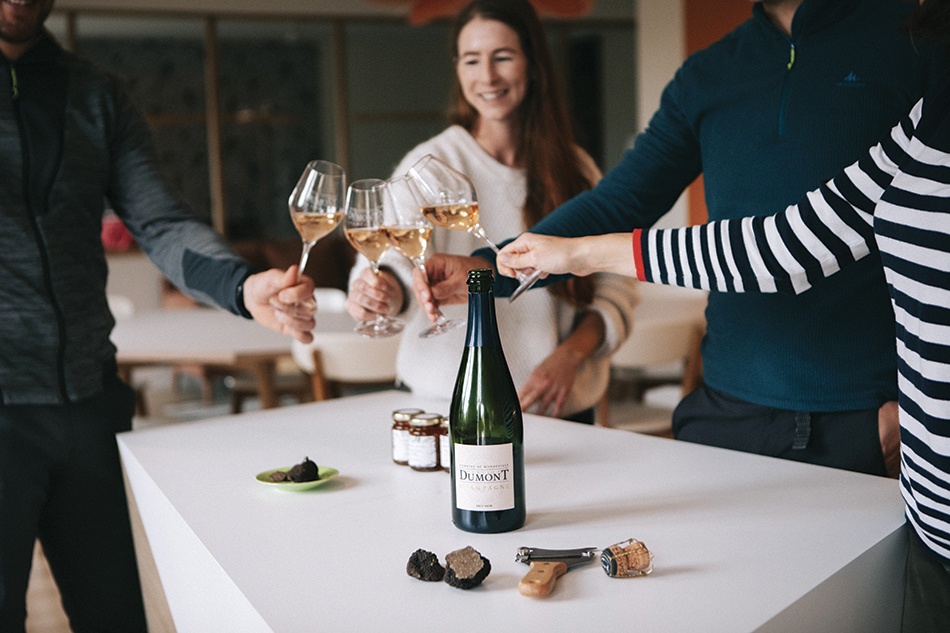
At Domaine de Mondeville, Champagne R. Dumont & Fils, you can explore another facet of the Aube vineyard through a diverse oenotouristic offering.
Nestled in the village of Champignol-Lez-Mondeville, the estate cultivates its vines in the central part of the Côte des Bar, mainly in Pinot Noir, but also in Chardonnay, Pinot Blanc, Pinot Gris, and Petit Meslier. In organic and biodynamic farming, the estate offers natural wines without added sulfur, distributed 70% internationally.
Thanks to its tourist entity, ‘L'Empreinte des Fées’, the estate offers vineyard discovery on foot or on all-terrain electric scooters. More uniquely, hop on a bright orange van with Delphine and her adorable dog Pino for a morning truffle hunt in the forest, from mid-October to mid-December. Smiles and good humor guaranteed. Delighted with the experience, we end the morning with a tasting of Champagne R. Dumont & Fils Cuvée 369 M, 90% Pinot Noir, 10% Chardonnay, a very straight, precise, and fruity wine, perfectly paired with truffle butter toast.
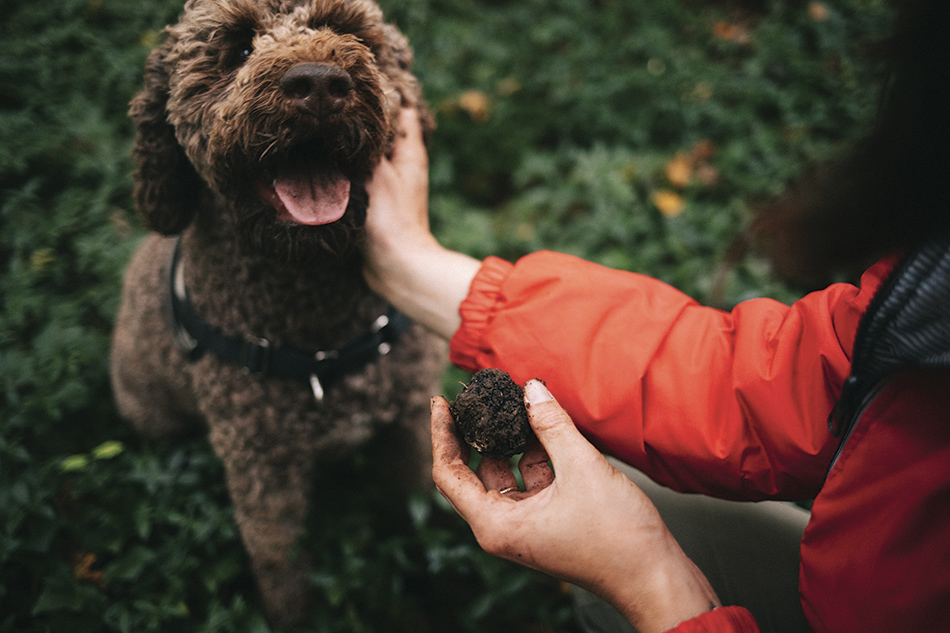
Aube is filled with experiences that blend well-being and sensory awakening. Located in the heart of Troyes, the Maison M, a beautiful 19th-century guesthouse, offers five charming rooms for a stay focused on relaxation, discovery, and leisure. After two years of renovation, this grand bourgeois residence, once built and inhabited by the historian Albert Babeau, is now fully restored, providing a modern and authentic decor while retaining its soul and historical character.
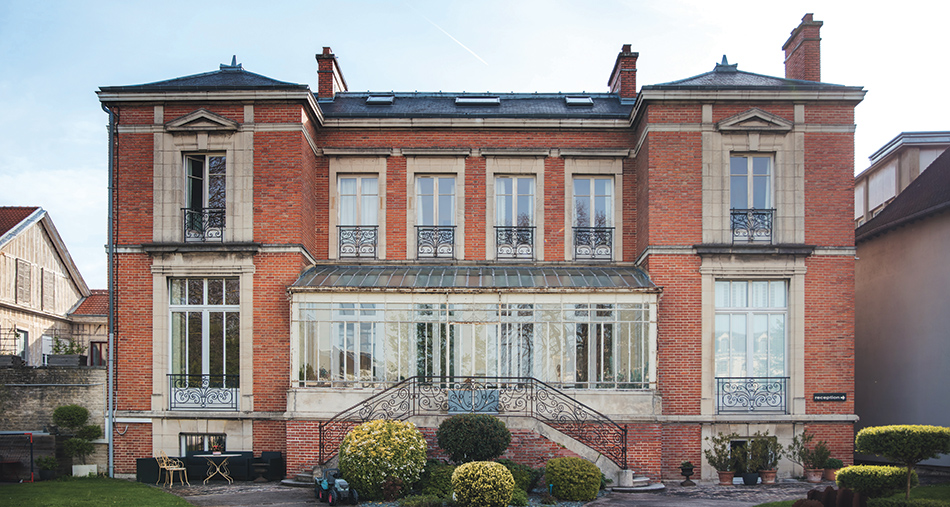
A bit further, in the heart of the Côte des Bar in Bar-sur-Aube, Qualisterra unveils high-end guest rooms where you can combine rest and discovery of the winemaker's life. This 16th-century house, with five rooms including a family suite and a large suite, was formerly called Le Petit Louvre and also functions as an inspiring organic vineyard. This philosophy is reflected in the very name of the estate—‘Qualis’ for land and ‘Terra’ for quality. Currently a partner for marketing Champagne Devaux, Qualisterra will introduce its own label in the spring. Stay tuned!
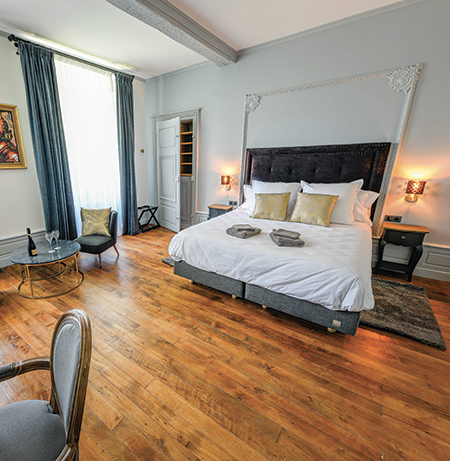
If hospitality is important, so is good food. We affirm this once again during a lunch at Garde-Champêtre, Étoile Verte in Gyé-sur-Seine, inspired by the historical work of a rural guard, Mr. Droze. Sourced from his 1-hectare organic farm, meals are prepared with fresh ingredients on the spot. With 7-meter high ceilings, giant windows, an open kitchen, and a fireplace in the dining room, the culinary experience is warm and inviting. Starting with a cauliflower tartlet, hazelnuts, mussel condiments, followed by a squash velouté, pumpkin seed oil, coffee-infused oil, and cashews, the starter is already exceptional, with a special mention for the sourdough bread baked on hay. The show continues with smoked deer in hay, roasted vegetables, poivrade sauce, and concludes with a remarkable crepe accompanied by apple, vanilla ice cream, salted butter caramel, kinako, cardamom crumble, and verbena whipped cream. A delight for the stomach... and the eyes!
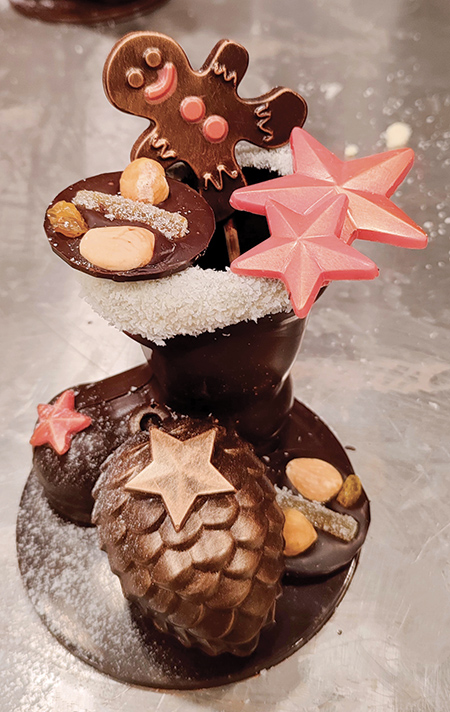
For even more greediness, I invite you to visit Moulin de la Lauchère in Éguilly-sous-Bois, to meet Alexandre Gyé-Jacquot, Meilleur Ouvirer de France chocolatier-confectioner 1996, vice-world champion of dessert crafts, and his wife Christine. They will welcome you to their charming guest rooms, nestled between the river, woods, and greenery. In addition to enjoying this true haven of peace, Alexandre, who spent 35 years with the renowned chocolatier Pascal Caffet, will reveal his expertise during pastry and chocolate-making classes. A teaching method that allows us to leave the workshop full of knowledge and contentment. A simplicity and a willingness to share that I discovered throughout my journey in the land of Aube.
Over time, Aube has gained more and more significance in the Champagne terroir. Culture, gastronomy, vineyards—each has managed to stand out and make the department a place rich in discoveries and anecdotes for French and foreign tourists alike. After all, didn't two Japanese apprentices come to learn about vine cultivation at the famous Clos Sainte-Sophie in Montgueux in 1878? They brought back Chardonnay plants, which they cultivated at the foot of Mount Fuji, now the origin of the main Japanese vineyard. Like the Japanese, we all leave with a bit of Aube in our hearts.
Sandy Bénard-Ravoisier
SommelierS International would like to thank the aiRPur agency and ADT Aube for their hospitality.